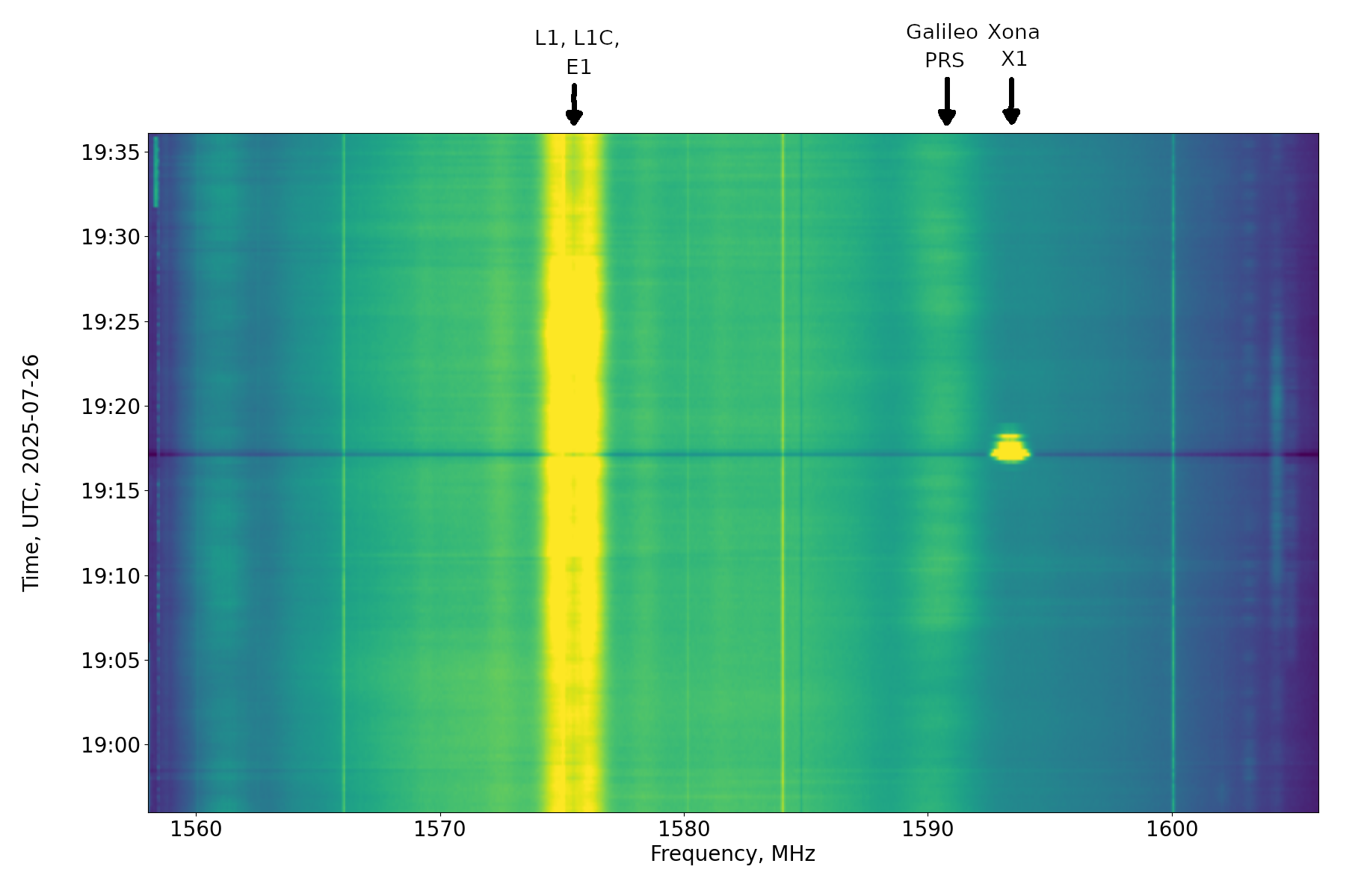This waterfall plot shows the L1 signal from Pulsar-0:
The frequency is as expected, 1593.322500 MHz give or take the Doppler shift (that is, a nominal carrier frequency of 155.75 times 10.23 MHz), but, curiously, the bandwidth appears to be only ~1.7 MHz rather than the 4 MHz mentioned in their FCC filing [1]. Perhaps this represents additional isolation from nearby services like Galileo PRS.
For total radiated power, I'm guessing "22 dBW" is a typo in their filing and that they really mean 22 W (13.4 dBW). But if they really intend 160 W raining down from LEO range, well, then it's time to increase the dynamic range of my receivers.
The recording with the strongest signal in this pass is available below, though it may not represent the strongest possible signal from the satellite because the recordings are not continuous. The recording is 8-bit signed IQ, 69.984 Ms/s, 200 ms duration, center frequency 1584.754875 MHz, filename-time given in GPS time (UTC + 18 s), observed from Indiana, USA.
http://pmonta.com/data/2025/207/SBTH00USA_2025207191730_L1.iq
Autocorrelation peaks with 1 ms spacing are visible, implying that the signal is not yet encrypted. There's also a dip near the center frequency in the power spectrum, so perhaps the spreading code is not white for some reason.
References
| [1] | FCC SAT-LOA-20241215-00282. https://forum.nasaspaceflight.com/index.php?action=dlattach;topic=60273.0;attach=2341527;sess=44407 |

